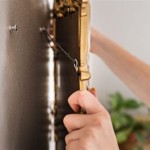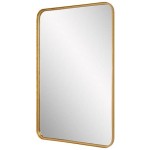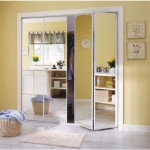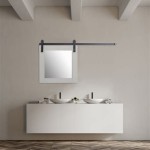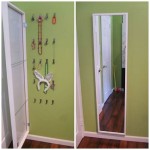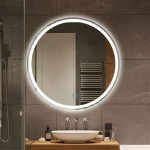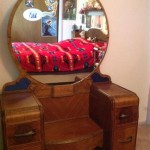How to Secure a Mirrored Dresser: Tips for Stability and Safety
Mirrored dressers add a touch of elegance and functionality to any room. However, their reflective surfaces and often considerable weight present unique safety challenges. Securing a mirrored dresser properly is crucial to prevent accidents, especially in households with children or pets. This article outlines several effective methods for anchoring and stabilizing these beautiful but potentially hazardous pieces of furniture.
Assessing the Dresser and the Wall
Before undertaking any securing measures, it is essential to assess both the dresser and the wall to which it will be attached. This assessment informs the selection of appropriate anchoring hardware and techniques.
* Determine the dresser's weight and dimensions. Heavier dressers require more robust anchoring solutions. * Identify the wall material. Different wall materials, such as drywall, plaster, or concrete, necessitate specific types of anchors. * Locate wall studs for optimal anchoring strength. Studs offer the most secure attachment points.Utilizing Wall Anchors
Wall anchors are crucial for securing heavy furniture like mirrored dressers. They distribute the weight more evenly and provide a stronger hold than screws alone, particularly in drywall or plaster walls.
*Toggle Bolts:
These anchors are ideal for hollow walls and offer excellent weight-bearing capacity. They require drilling a larger hole but provide superior holding power. *Molly Bolts:
Another option for hollow walls, molly bolts expand behind the wall surface, creating a secure grip. *Screw-in Anchors:
These are simpler to install than toggle or molly bolts and suitable for lighter dressers or when attaching to studs. *Concrete Anchors:
For concrete walls, specialized anchors like concrete screws or sleeve anchors are necessary.Anchoring the Dresser to the Wall
The anchoring process itself requires precision and care to ensure optimal safety and stability.
* Mark the desired anchoring points on the wall and the corresponding locations on the back of the dresser. * Drill pilot holes in both the wall and the dresser using appropriately sized drill bits. * Insert the chosen wall anchors into the wall, ensuring they are flush with the surface. * Attach the dresser to the wall using screws, driving them through the pre-drilled holes in the dresser and into the wall anchors. * Tighten the screws securely, but avoid over-tightening, which could damage the dresser or the wall.Using Anti-Tip Straps
Anti-tip straps are essential safety devices designed to prevent furniture from tipping over. They are particularly important for homes with children.
* Attach one end of the strap to the back of the dresser using screws. * Secure the other end of the strap to a stud in the wall. If a stud is not accessible, use a sturdy wall anchor. * Ensure the strap is taut but allows for some flexibility. * Test the connection by applying pressure to the top front edge of the dresser. The dresser should remain stable and not tip forward.Adding Stability with Furniture Feet
Furniture feet can enhance stability, especially on uneven floors. They also help distribute the dresser's weight more evenly.
* Choose adjustable furniture feet to compensate for uneven floor surfaces. * Install the feet according to the manufacturer's instructions. * Ensure all feet are in firm contact with the floor, providing balanced support.Placement and Environmental Considerations
Strategic placement and awareness of environmental factors can further contribute to the dresser's stability and longevity.
* Place the dresser on a level surface to minimize stress on the furniture and anchoring hardware. * Avoid placing the dresser in areas prone to high humidity or moisture, which can damage the mirror and the dresser frame. * Keep heavy objects on lower shelves to lower the center of gravity, making the dresser less likely to tip.Regular Inspection and Maintenance
Regular inspections and maintenance are essential for ensuring the continued safety and stability of the anchored dresser.
* Periodically check the tightness of the screws and wall anchors. * Inspect the anti-tip straps for wear and tear and replace them if necessary. * Clean the mirror and the dresser frame regularly to prevent damage from dust and moisture.
Heavy Duty Dresser Mirror Support Brackets Made In The Usa

Dresser Mirror Brackets September 2024 Your Guide

Fitting Dresser Mirror

How To Secure A Leaning Mirror The Wall Diy Playbook

Dresser Mirror Idea Turn A Into Shelf Easy Diy Project

How To Secure A Heavy Leaning Floor Mirror The Wall Love Our Real Life

How To Build A Mirrored Wall Mount Jewelry Cabinet Interior Frugalista

How Do I Attach A Mirror To Dresser Hunker

How To Move A Dresser By Yourself Step Guide Mymovingreviews

Ciara 6 Drawer Dresser With Mirror


